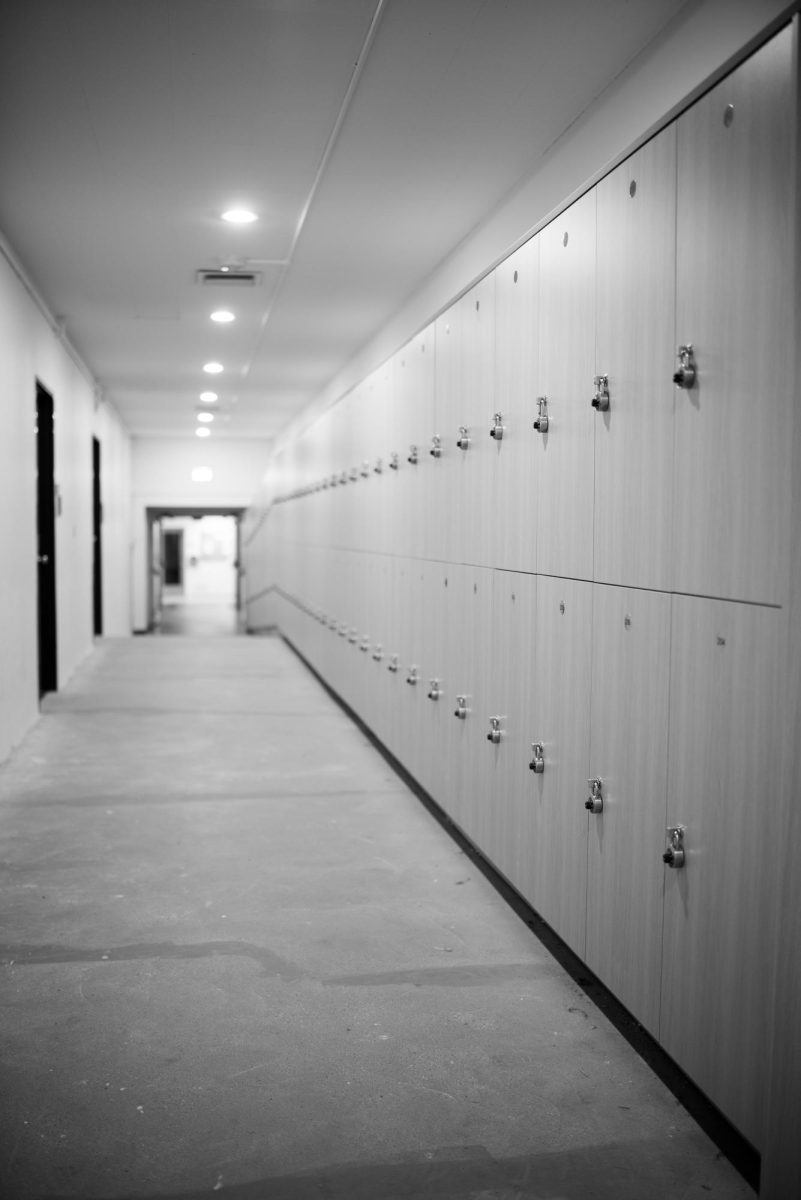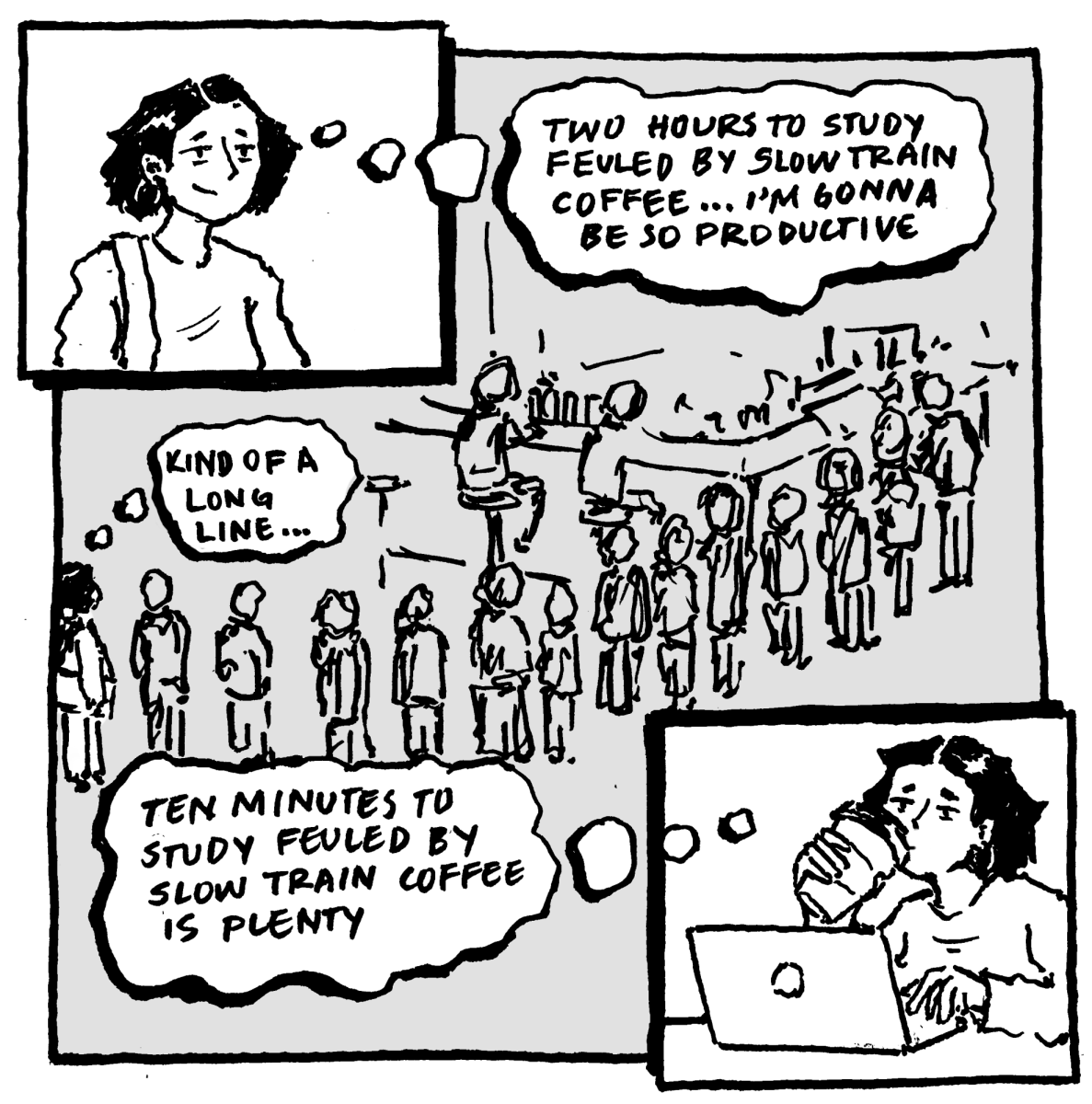In spring of this year, I went on a trip to Crocker Park sponsored by the Oberlin Program Board. When I got there, I remember being struck with a feeling of eeriness. Here was a dense urban space, but it did not look inhabited. It had none of the chaotic and unfitting idiosyncrasies you expect from an urban space — nothing looking old or decrepit, no graffiti, no posters pasted on surfaces, et cetera. There were humans aplenty, but it seemed they had no effect on their environment. I further remember feeling a sense of comfort when I went to the bathroom and found a piece of graffiti on the walls. It reminded me that there is something unsettling when an environment looks too sleek, too ordered, too inhuman. And it is that human spark of chaos that makes an environment feel truly lived-in. This is a spark I worry Oberlin may seek to suppress.
It seems that the current Oberlin administration has something of an inferiority complex with regard to its standing. Just a few weeks ago, Campus Digest felt the need to complain that Oberlin was not highly ranked in the U.S. News and World Report — as if that ranking was at all an objective measure of quality rather than just the most prestigious colleges currying for favor to achieve a good ranking in a prominent national newspaper. But this does fall into the current administration’s determination to run the College as a business, an unsurprising but regrettable display of the business mindset that pervades postmodern capitalist society. And what is the easiest way for a business to turn a profit but by imitating what is already profitable? And for Oberlin, this means imitating the cookie-cutter model of a modern urban university. And what way is more iconic than the architectural renovations Oberlin loves so much these days?
Oberlin has been in the process of “updating” much of its infrastructure. Some of it serves a practical purpose, such as making buildings more accessible — (though Wilder Hall’s renovations in the meantime have made things harder for disabled people waiting in line for the Rathskeller), — or admitting more students because Oberlin desperately needs more money. But then there are other changes, such as the newly painted doors and vending machines. Painting the doors serves no new purpose. This has a similar objective to the numerous building renovations and sleek modern buildings being built on campus, but lacks the practicality. But what these changes have in common is the conversion of Oberlin’s aesthetic spirit to postmodern capitalism.
Now, make no mistake, I do not hate modern architecture nor do I fetishize old-fashioned architecture. But what I do not like is the erasure of idiosyncratic character in favor of homogeneity. Oberlin’s campus has a unique character that is strengthened by its residents — humans who usually have that spark that does not quite fit into a plan. To attempt to “modernize” Oberlin is to remove the flaws, the imperfections, and the wild humanness that gives it character. I do not believe Oberlin is planning to tear down all of the old buildings, but I do find the new design choices fitting with the administration’s direction. They are the same glass, steel, and fresh brick designs that would be found in any new campus building at any “future-thinking” college in any city or town. While I am not opposed to modern architecture, I am opposed to needless uniform modernization prioritized over character.
When I first pitched this article, I planned to write about how modernist, vaguely futuristic looking renovations were fundamentally dishonest, but for a college that is in decline, I have realized that it is in fact is quite honest. After all, what is a better fit than uniform sterile corporate aesthetics for a college that is gradually tearing down its institutions and determined to turn itself into a soulless business in its quest for profitability? Where unions have been busted and dining food outsourced to another company? Where OSCA has been press-ganged into changing its arrangement with the College effectively, increasing its costs so that the College would not lose a potential source of profit? Where a board of wealthy businesspeople has cut the autonomy professors have traditionally enjoyed? Where students are required to spend hundreds of dollars on interactive textbooks and other expenses on top of the tens of thousands of dollars already being spent by them on education, room, and board? Where student activism has become increasingly ineffective against these changes as the remnants of counterculture fade away, even at one of the most historically countercultural schools?
I do not believe that the College will go bankrupt anytime soon, with or without these changes, but I do believe that Oberlin is at risk of losing much of its uniqueness and turning into a generic, modern, profit-oriented college.






